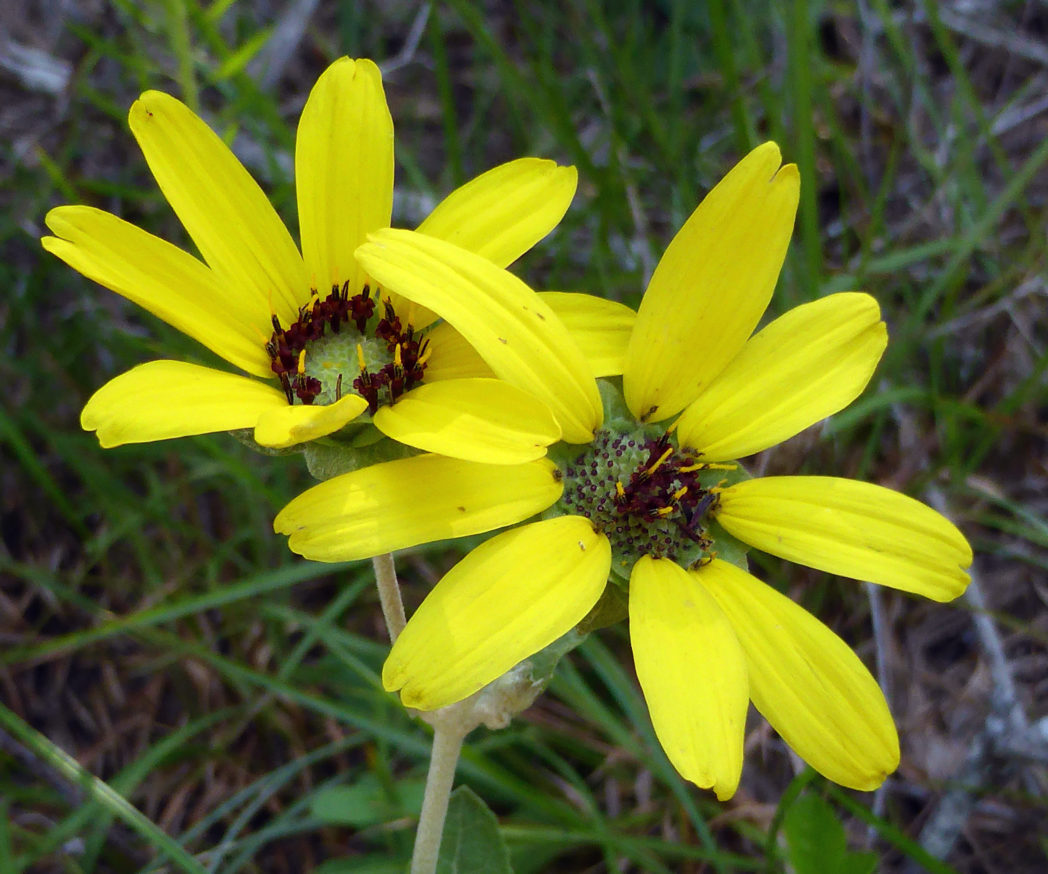Soft greeneyes
Pictured above: Soft greeneyes (Berlandiera pumila) by Eleanor Dietrich. Click on terms for botanical definitions. View post as a PDF.
Soft greeneyes (Berlandiera pumila) is a perennial herbaceous wildflower found in sandhills and pinelands throughout the Panhandle and north Florida. It blooms in spring and summer and attracts a variety of pollinators, including butterflies, bees and wasps.
Soft greeneyes’ showy flowers are comprised of ±8 bright yellow ray florets around a center of green disk florets. The florets turn maroon and emit a subtle chocolate scent as they open. Bracts are overlapping and ciliate. Leaves are ovate to lanceolate with toothed margins and a velvety surface. They may be petiolate or sessile and are alternately arranged. Stems are tomentose, giving them a grayish tint. Seeds are born in cypselae, which are attached to the bracts. Once the seeds disperse, a green plate-like disk remains, giving the genus its common name, “greeneyes.” This is a distinguishing feature of species within the Berlandiera genus.
The genus name Berlandiera refers to 19th century naturalist Jean-Louis Berlandier, who collected botanical specimens in Mexico and Texas. The species epithet pumila is from the Latin pumilus, meaning “dwarf” and referring to its small stature (as it compares to other plants).
Family: Asteraceae (Aster, composite or daisy family)
Native range: Panhandle, north peninsula to Volusia and Marion counties
To see where natural populations of Soft greeneyes have been vouchered, visit florida.plantatlas.usf.edu.
Hardiness: Zones 8A–9B
Lifespan: Perennial
Soil: Dry to well-drained sandy soils
Exposure: Full sun to partial shade
Growth habit: up to 3’ tall
Propagation: Seed
Soft greeneyes plants are not generally propagated for commercial sale. Look for them this summer in north Florida’s uplands — and don’t forget to stop and smell the chocolate!
For more information on other Berlandiera species, see these resources:
Florida greeneyes (Berlandiera subacaulis)

